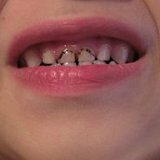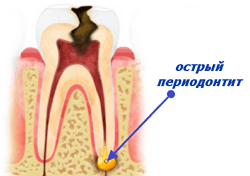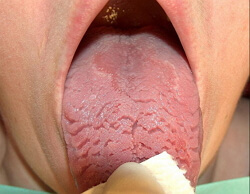How to treat multiple caries of baby teeth

You probably already heard about the most common problem of dairy and permanent teeth - caries. But have you ever wondered how effectively it can be treated? Caries is a problem that needs to be solved immediately, and not as it starts to worry you, because it is not only aesthetically wrong to have damaged teeth, but it can turn out to be much more serious and become a health hazard.
It should be noted that the very formation of teeth rudiments occurs long before the birth of a child and the proper development of future teeth depends to a large extent on how these rudiments were formed.
On the development of them can affect a variety of factors, the main of which:
- Correct and calm passage of pregnancy.
- Diseases that have been transferred by a woman during her pregnancy and before her.
- The nature and complexity of a woman's nutrition during pregnancy.
Why monitor the correct development of the teeth rudiments? This is simple, because it is intrauterine growth that forms solid tissues, the incorrect development of which will make the enamel of the teeth fragile and this can be the cause of caries.
Multiple caries is a massive lesion of a large number of teeth at one time( usually 7-9 teeth at once or more), in which several foci of the carious process can be present in the same tooth. Caries is a disease of the teeth that develops at a very fast pace and can completely "kill" the baby teeth, which will simply be unsuitable for treatment. That is why it is very important to eliminate the rudiments of caries early and give the oral cavity a healthy appearance, because a smile is the key to everyone's success.
Caries can be not only a hereditary disease that is determined even at the fetal stage of fetal development, it can occur after the transfer of infectious diseases, such as angina, scarlet fever, measles. Also contribute to the development of caries can and tonsillitis, or frequent inflammation and bronchial disease.
Treatment of caries.
To date, there are many ways to treat multiple tooth decay of baby teeth, many of which even occur without the use of a drill, which has already become a symbol of the fear of most people, especially those who had unpleasant experience with it. And since pediatric dentistry has made a big step forward, nowadays caries can be treated quite painlessly, even without any anesthesia. The first effective method of treatment of caries is laser dentistry, with the help of which painless caries removal and sealing of the upper layers of the enamel is carried out. It is worth noting that the biggest advantage of such treatment is the total absence of vibration, which always caused pain and fear. No need to use anesthesia will also save an injection.
The time of treatment of multiple caries in children varies from the number of sick teeth and the degree of neglect of caries. But, as a rule, caries is treated with a delayed method, namely at least two visits to dentistry. At the first visit to the dentistry cabinet, the doctor cleans the tooth lesions with caries and applies special preparations with a high calcium content to them. After this, an ordinary, temporary filling is established, which is very sensitive to stresses and must stay for several days in maximum "calmness".During the second visit, repeated cleaning of the affected areas is carried out, regular seals of strong material are installed, which is subject to normal operation. The second visit to the doctor is always appointed within 10-15 days after the installation of temporary seals.
A complicated form of caries creates a great difficulty in treatment, in which general anesthesia should be treated. But in this case, you can immediately install a long-term seal. In the same way, the planar caries is caries, which spreads along the tooth plane, and not into the depths. This type of tooth decay is less dangerous for the tooth, as it is treated almost painlessly, but with its rapid development, tooth enamel can lose its effect, which will lead to its rapid loss, so an immediate appeal to the dentist can save your smile or your child's smile. But the slow development of tooth decay of baby teeth is very rare in children, more often there is a rapid development, in which the destruction of hard tooth tissues immediately occurs.
It is worth remembering that it is highly discouraged to remove milk teeth, because premature removal can lead to underdevelopment of the dental system and this will be very dangerous, especially at the time when permanent teeth are formed. Therefore, problems with the teeth can lead to certain consequences associated with the digestive tract, because due to the absence of teeth, there is no proper chewing of food, at which gastric enzymes are allocated for proper and timely digestion of food.
It should be noted that a separate problem arises when caries is formed in children under 3 years old, with whom it is very difficult to carry out any kind of dental work. In this case, special solutions are used to rinse and lubricate the oral cavity, but they will be effective only at a time when dental caries are just beginning, so you will be the guarantor of healthy teeth in children - watch carefully for the teeth of the child.
Anesthesia for children.
A major problem in the treatment of a child is anesthesia - it is known to everyone, most likely. After all, to make anesthesia - it's painful and scary to look like a child, and not to do it - it will be impossible to carry out the necessary work to eliminate caries and fill the tooth. But very often anesthesia does not help for successful sealing, since it is the fear of doing something in the mouth that frightens the child when treating a baby tooth. But it is necessary to treat, otherwise the consequences can be very unacceptable. If the child is very afraid, then a general anesthesia is used, during which the planned treatment is carried out for one time, or apply a bonus - the appointment of special drugs that are used before local anesthesia and improve its effect( if the child has a gag reflex or contraindications to anesthesia).



